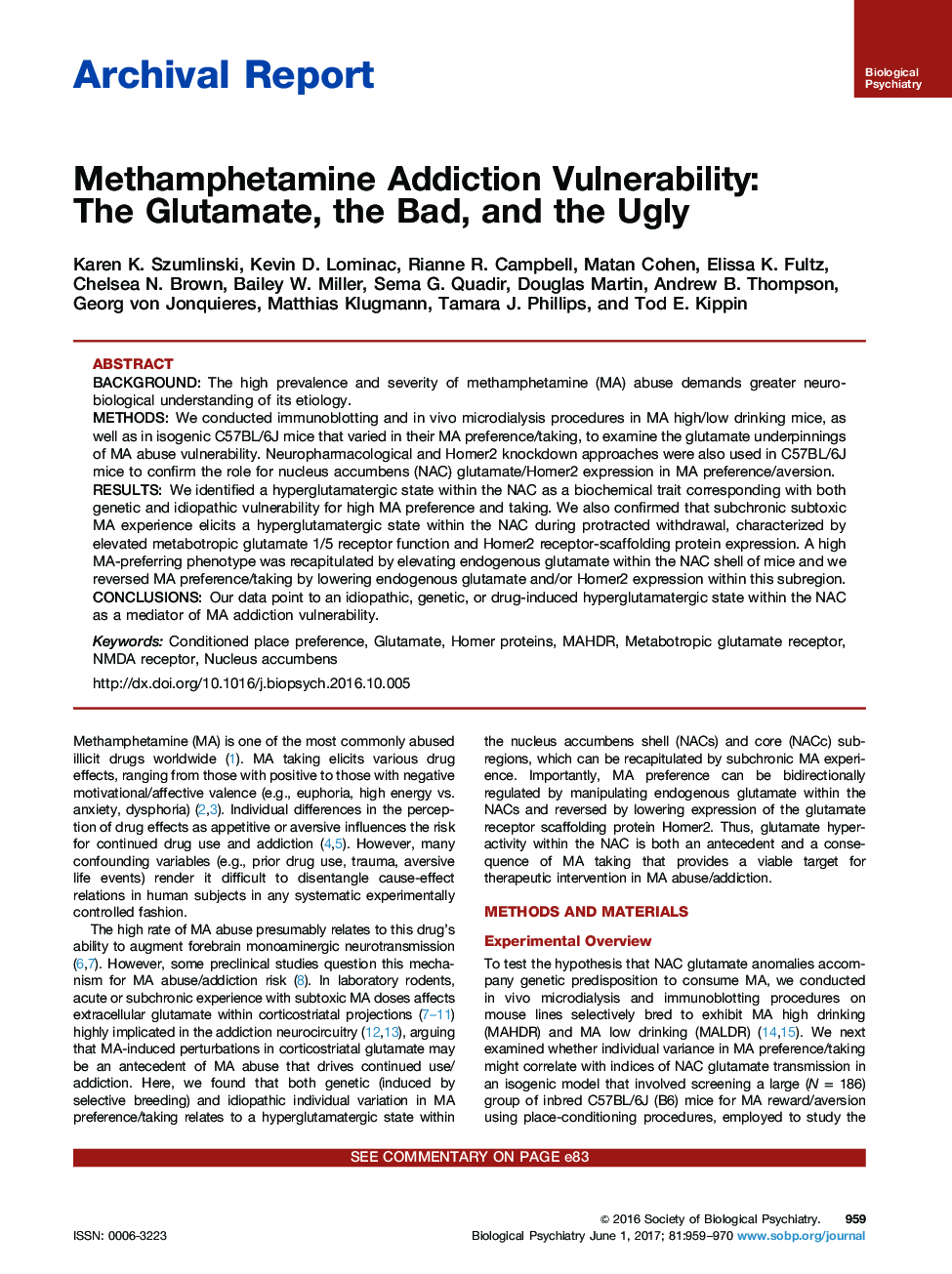| Article ID | Journal | Published Year | Pages | File Type |
|---|---|---|---|---|
| 5720864 | Biological Psychiatry | 2017 | 12 Pages |
BackgroundThe high prevalence and severity of methamphetamine (MA) abuse demands greater neurobiological understanding of its etiology.MethodsWe conducted immunoblotting and in vivo microdialysis procedures in MA high/low drinking mice, as well as in isogenic C57BL/6J mice that varied in their MA preference/taking, to examine the glutamate underpinnings of MA abuse vulnerability. Neuropharmacological and Homer2 knockdown approaches were also used in C57BL/6J mice to confirm the role for nucleus accumbens (NAC) glutamate/Homer2 expression in MA preference/aversion.ResultsWe identified a hyperglutamatergic state within the NAC as a biochemical trait corresponding with both genetic and idiopathic vulnerability for high MA preference and taking. We also confirmed that subchronic subtoxic MA experience elicits a hyperglutamatergic state within the NAC during protracted withdrawal, characterized by elevated metabotropic glutamate 1/5 receptor function and Homer2 receptor-scaffolding protein expression. A high MA-preferring phenotype was recapitulated by elevating endogenous glutamate within the NAC shell of mice and we reversed MA preference/taking by lowering endogenous glutamate and/or Homer2 expression within this subregion.ConclusionsOur data point to an idiopathic, genetic, or drug-induced hyperglutamatergic state within the NAC as a mediator of MA addiction vulnerability.
